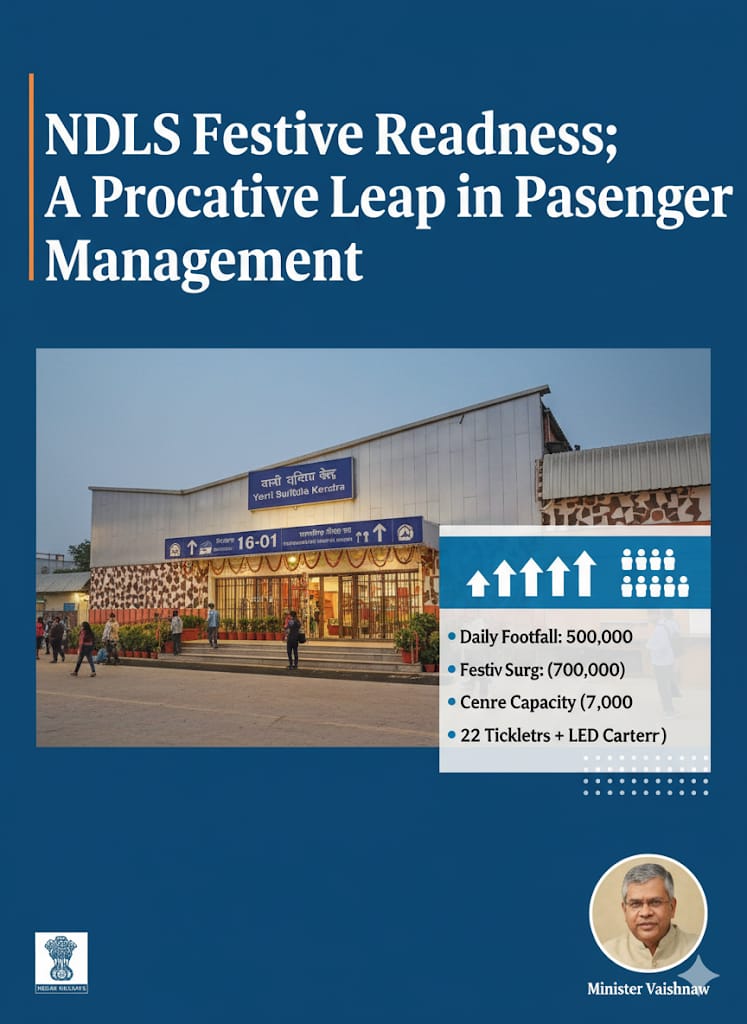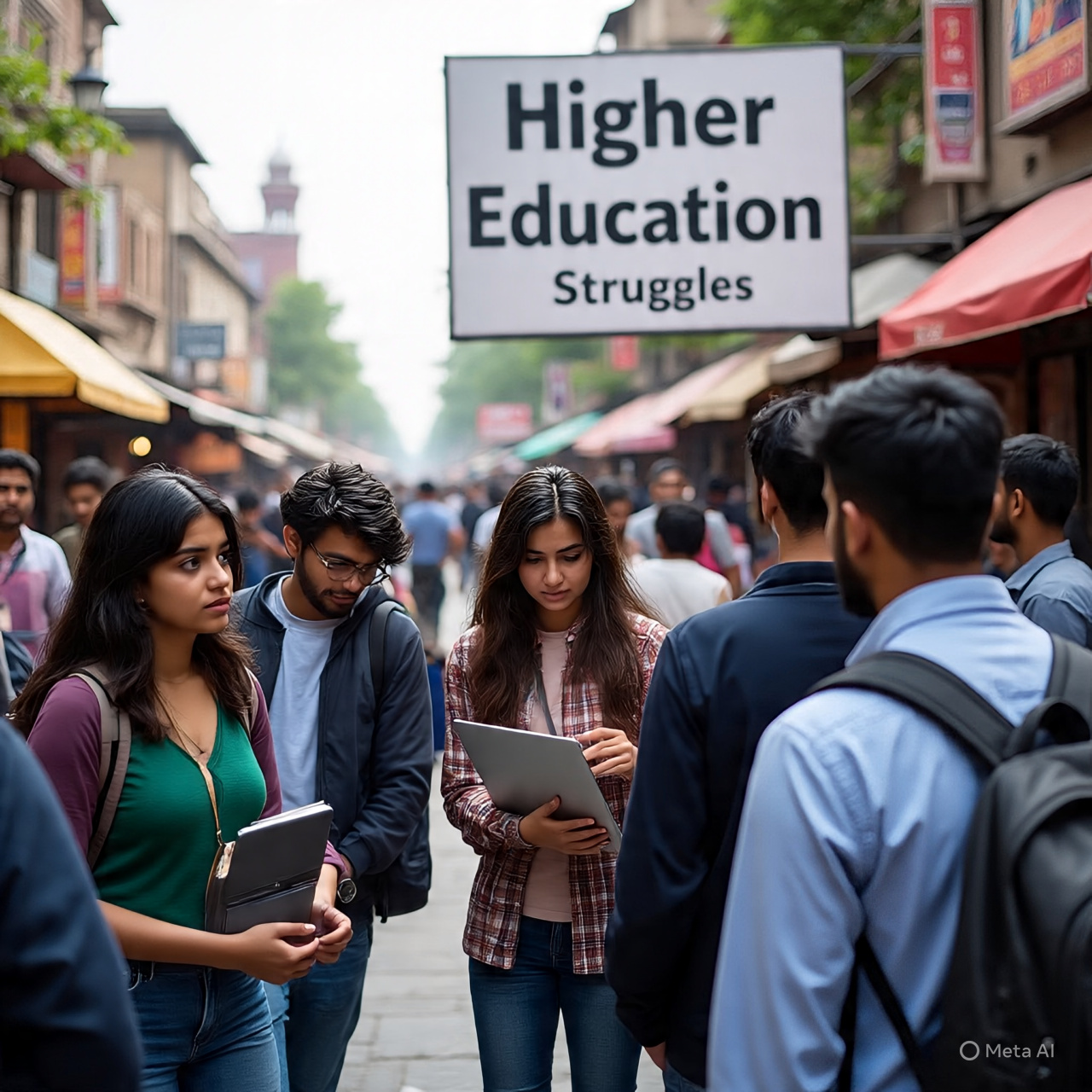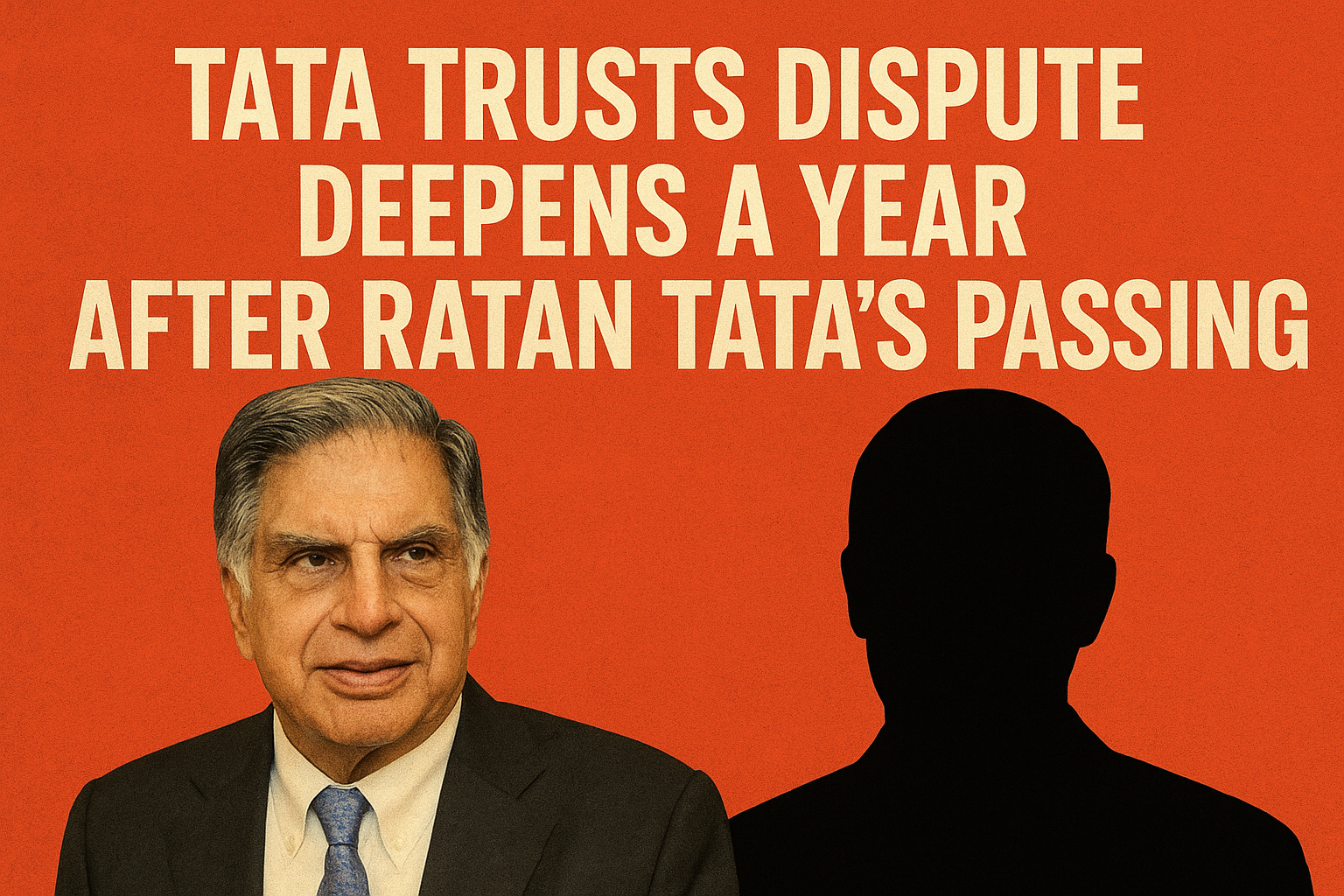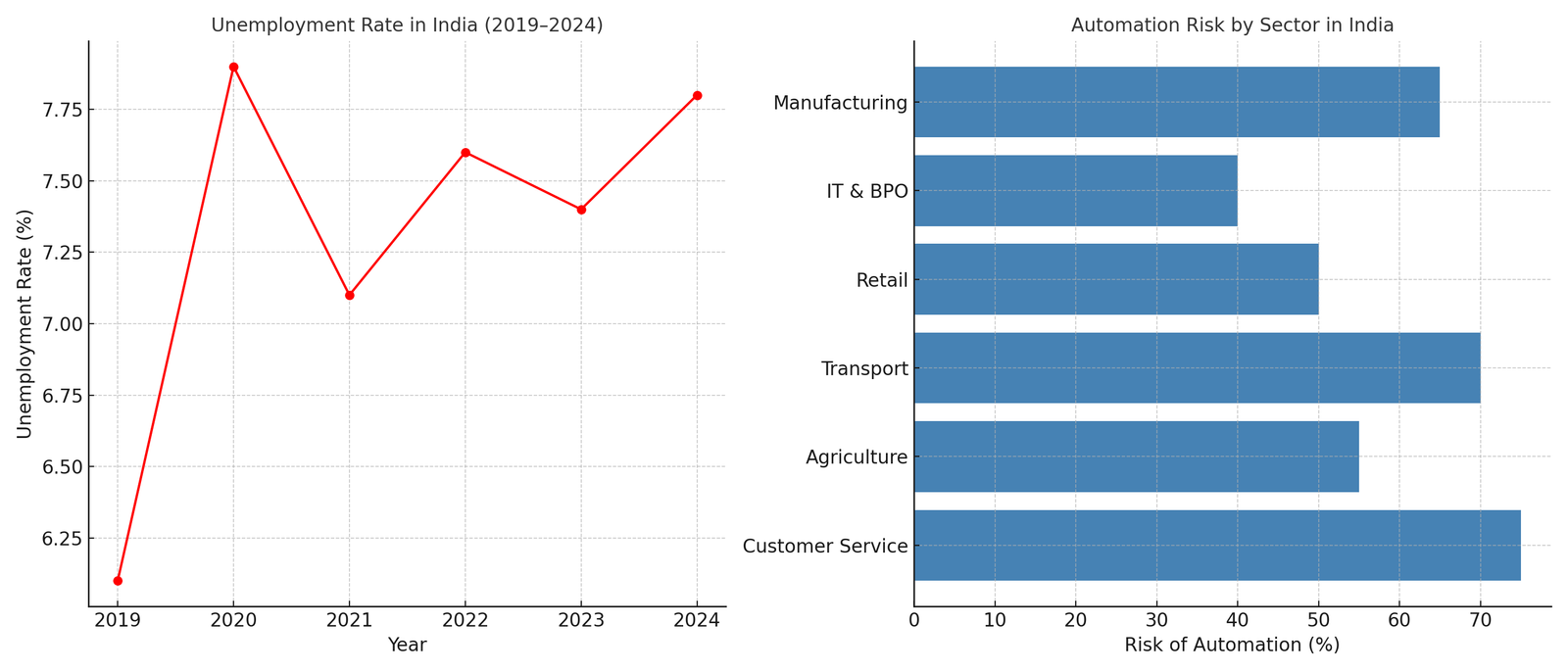
India, a country of over 1.4 billion people, is facing a serious challenge: the rise in poverty due to increasing unemployment. One of the main reasons behind this is the rapid use of Artificial Intelligence (AI) across various industries. While AI makes work faster and more efficient, it is also eliminating jobs—especially those held by low-skilled workers and people involved in routine tasks.
In recent years, India has made major progress in technology. AI is now used in banking, manufacturing, customer service, healthcare, transportation, and even agriculture. While these innovations help companies cut costs and boost profits, they also replace human workers with machines and automated systems. According to a report by the International Labour Organization (ILO), nearly 70% of jobs in India are at risk of automation in the coming decades.
Data from the National Sample Survey (NSS) and the Centre for Monitoring Indian Economy (CMIE) shows that India's unemployment rate hovered between 7% and 8% in 2024. More concerning is the rising joblessness among youth and low-income groups. A 2023 NITI Aayog report warned that around 40% of jobs in the IT and manufacturing sectors could be automated by 2030—putting millions at risk of losing their income and slipping below the poverty line.
In rural India, farmers are already feeling the impact of AI-powered machines that handle seeding, harvesting, and even irrigation. In urban areas, small customer service centers are shutting down as companies adopt AI chatbots. Delivery drivers and truck operators now worry about the growing use of self-driving vehicles. These shifts are leaving many people unemployed, without giving them the new skills needed to survive in a changing job market.
India’s poverty rate had fallen to about 10% in 2020, but the COVID-19 pandemic reversed much of that progress. According to a Pew Research Center study, around 75 million Indians were pushed back into poverty after 2020. The rise of AI-driven job losses could make this situation worse if not handled carefully.
One of the biggest challenges is the skill gap. A large section of the population still lacks access to digital education and training in AI-related fields. This creates inequality: those with higher education or technical skills get better opportunities, while others are left behind. Without a strong focus on reskilling and upskilling, poverty and unemployment will continue to grow.
To tackle this crisis, India needs to act fast and wisely. First, the government must launch large-scale programs to teach digital skills to displaced workers. Second, small businesses and startups—which create local jobs—must be supported through funding and infrastructure. Third, AI should be used to assist human labor, not completely replace it. For example, AI can help farmers with weather forecasts or aid doctors in diagnosis, but final decisions should involve human oversight.
Public policy should also focus on job protection, minimum wages, and basic social security. The government must invest in sectors that depend on human involvement—like tourism, healthcare, education, and green energy—to reduce poverty and generate sustainable employment.
In conclusion, Artificial Intelligence is a powerful tool that can transform India, but only if used with caution and responsibility. If left unchecked, it could widen inequality, raise unemployment, and push millions into poverty. With the right balance of training, regulation, and inclusive innovation, India can turn this challenge into an opportunity that benefits all.




.jpeg)

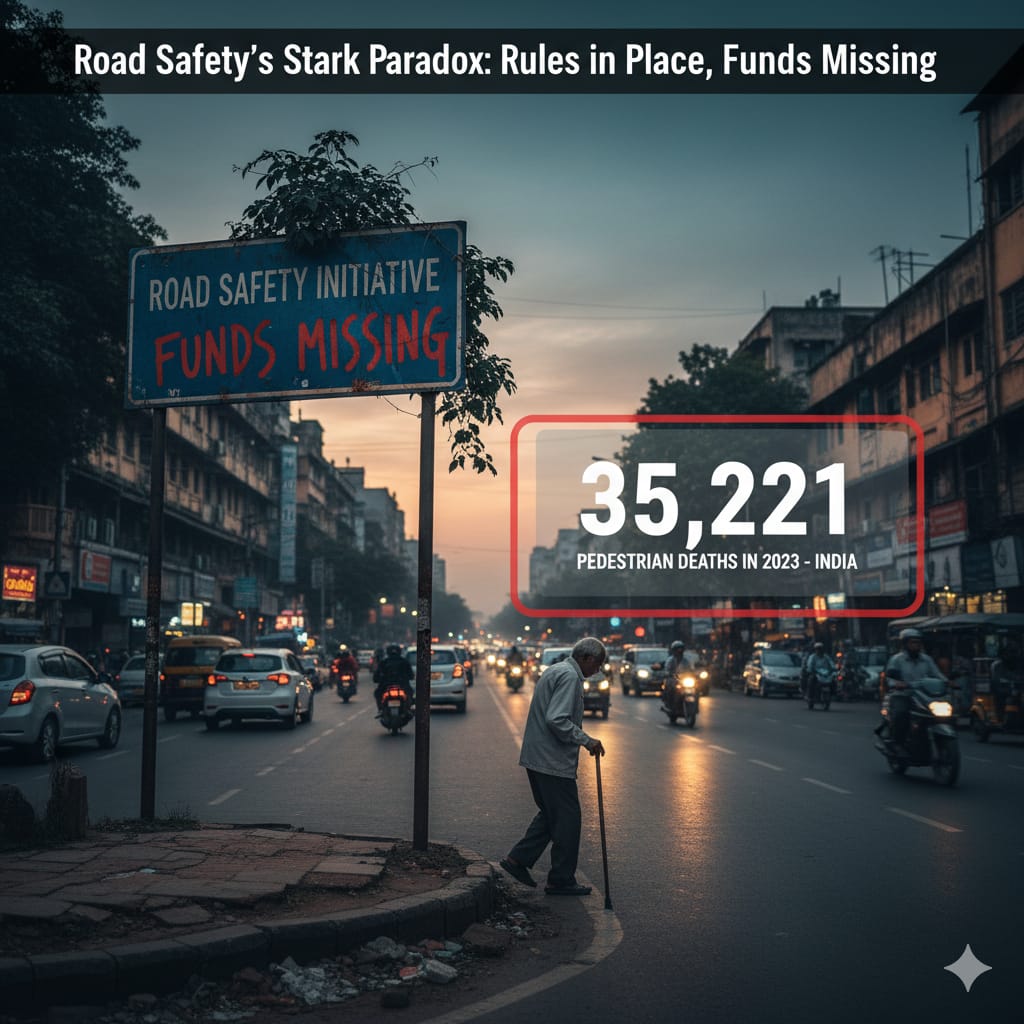
.jpeg)

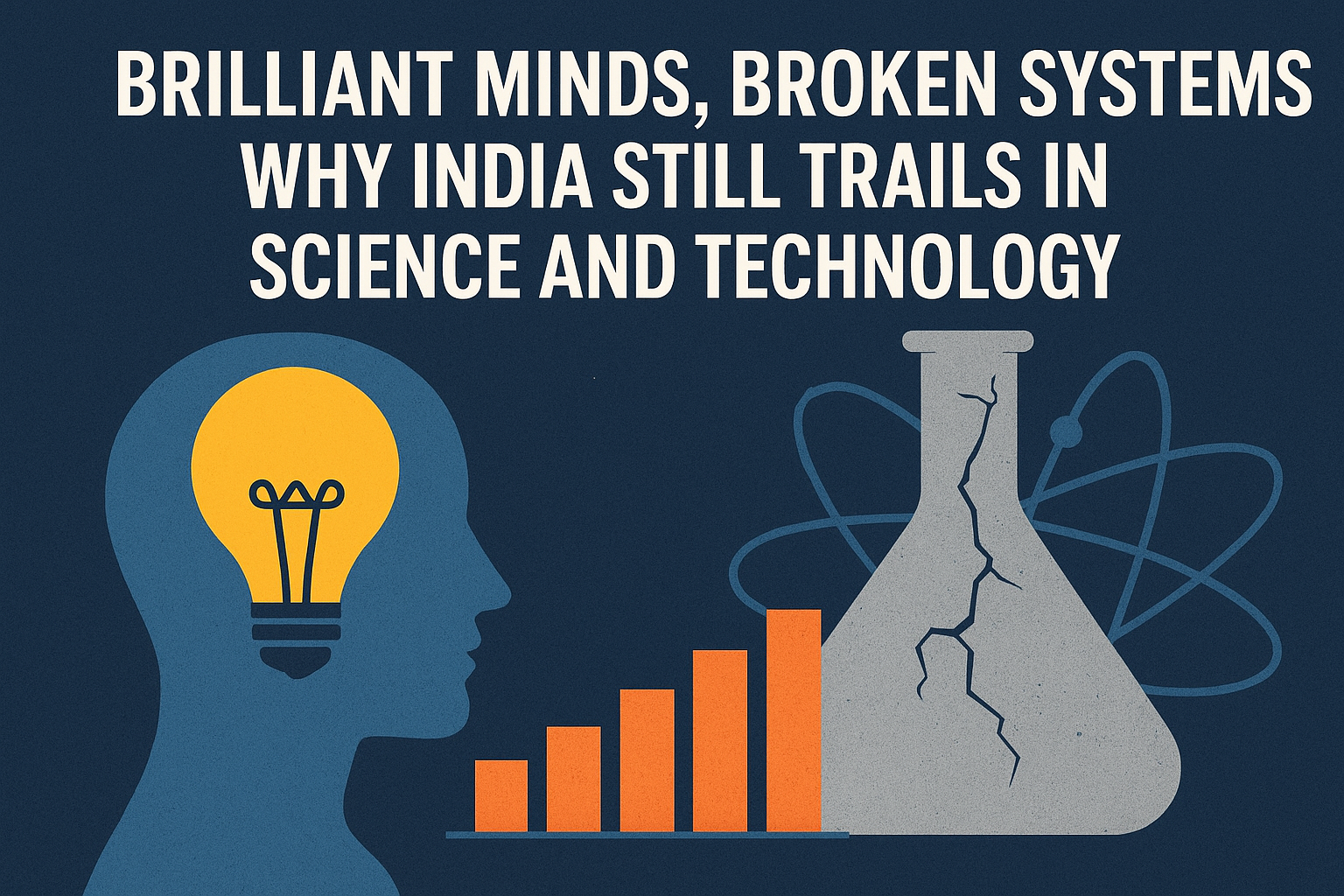


.jpeg)
